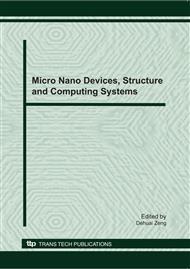p.338
p.342
p.348
p.353
p.358
p.363
p.371
p.377
p.383
Variation of Absorption Coefficient of Glucose Water in Consideration of Water Displacement
Abstract:
Adding glucose in water will cause two influences on the aqueous solution: one is absorption coefficient addition of glucose; the other is absorption coefficient decrease of water because of water displacement. So the total absorption effect is the result of the absorption coefficient increase of glucose and absorption coefficient decrease of water. In this paper the absorption coefficient of glucose water is analyzed in consideration of water displacement. By data of handbook, we deduce a relationship between the glucose absorption coefficient addition and water absorption coefficient decrease. When one molar glucose is added into water, 6.15 molars water molecular is displaced. The wavelength selection in glucose detection should be at the place where the combined absorption is maximum. The wavelength of widely used in blood glucose concentration detection, e.g. 1.6μm, is selected as an example for analysis. When glucose is added into water, the linear relationship between glucose concentration and absorption coefficient is hold on. On the other hand, when the water molecular is decreased, the water absorption coefficient will decreased, too, which will decrease the total absorption coefficient compared to the situation without water displacement. In general, water displacement will decrease the sensitivity of absorption coefficient to glucose concentration.
Info:
Periodical:
Pages:
358-362
Citation:
Online since:
December 2010
Authors:
Price:
Сopyright:
© 2011 Trans Tech Publications Ltd. All Rights Reserved
Share:
Citation:


